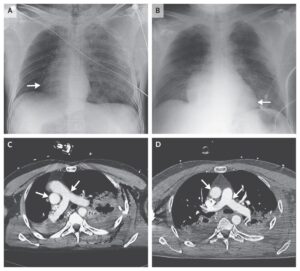This article is an answer to the Case – Dark Linear Hyperpigmented Lesions
The patient’s clinical presentation and medical history of Hodgkin’s lymphoma on chemotherapy is supportive of a diagnosis of flagellate pigmentation from bleomycin.
Bleomycin is a cytotoxic antibiotic used to treat malignancies such as Hodgkin’s lymphoma, non-Hodgkin’s lymphoma, as well as testicular, ovarian and cervical cancers.
In up to 20% of patients treated with systemic bleomycin, flagellate hyperpigmentation can occur, usually in a dose-dependent manner. The pigmentation can appear within 1 day to 9 weeks after drug administration, but typically after cumulative doses of 100–300 mg.
Bleomycin is associated with additional cutaneous side effects, including painful nodules on the fingers, verrucous plaques on the knees and elbows and Raynaud’s phenomenon. Nail changes can also be seen in patients treated with bleomycin, including melanonychia, Beau’s lines, onychomadesis and onycholysis.
Shiitake mushroom dermatitis can also present with similar flagellate lesions in the setting of ingestion or exposure to raw shiitake mushrooms. Flagellate erythema can also occur in patients with dermatomyositis and adult-onset Still’s disease.
Treatment
There is no specific therapy for bleomycin-related flagellate hyperpigmentation. Symptom management with topical corticosteroids and oral antihistamines can be used. The pigmentation tends to fade over the course of months after bleomycin is discontinued.

